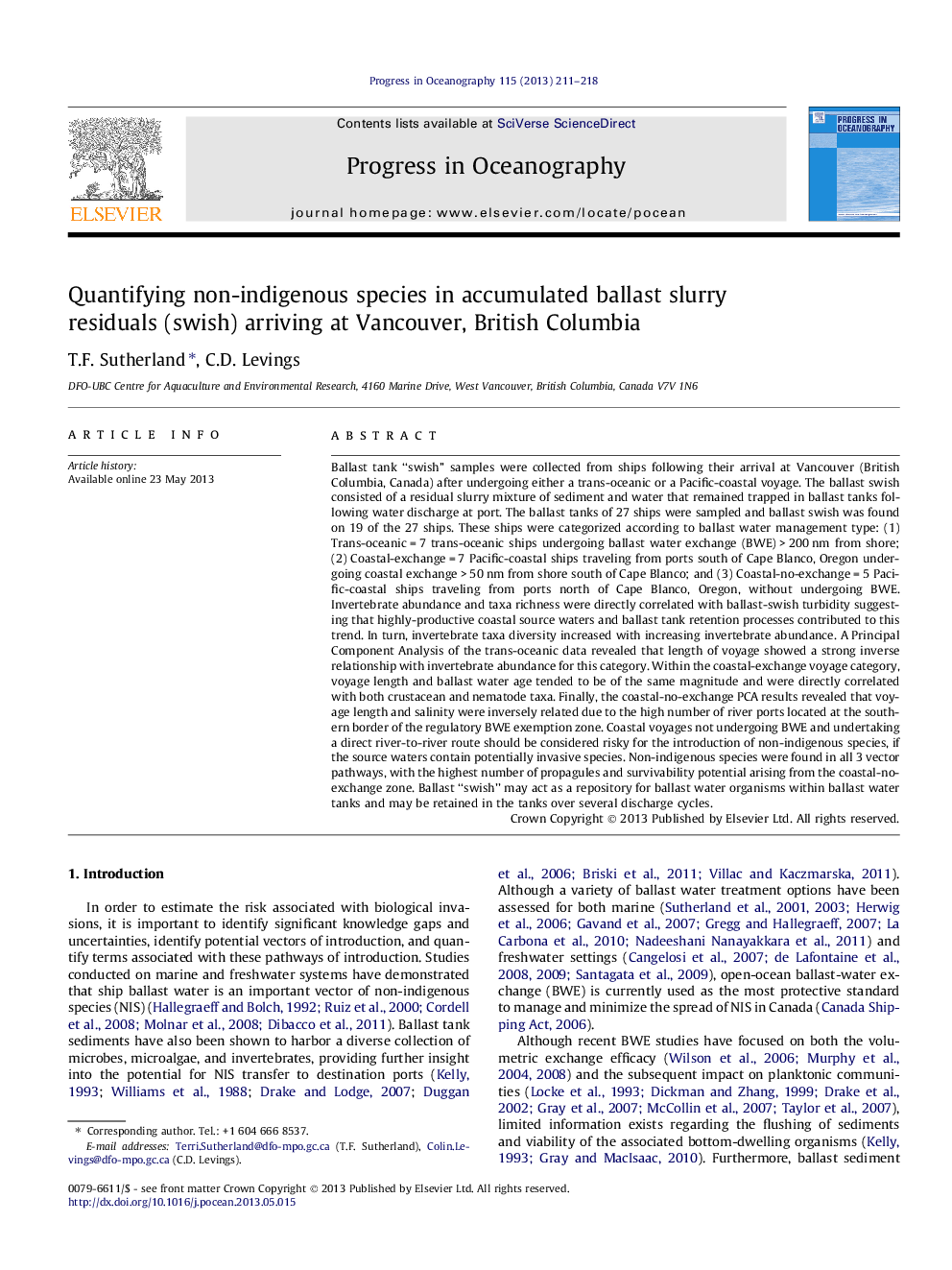| کد مقاله | کد نشریه | سال انتشار | مقاله انگلیسی | نسخه تمام متن |
|---|---|---|---|---|
| 6388772 | 1627940 | 2013 | 8 صفحه PDF | دانلود رایگان |
عنوان انگلیسی مقاله ISI
Quantifying non-indigenous species in accumulated ballast slurry residuals (swish) arriving at Vancouver, British Columbia
دانلود مقاله + سفارش ترجمه
دانلود مقاله ISI انگلیسی
رایگان برای ایرانیان
موضوعات مرتبط
مهندسی و علوم پایه
علوم زمین و سیارات
زمین شناسی
پیش نمایش صفحه اول مقاله

چکیده انگلیسی
Ballast tank “swish” samples were collected from ships following their arrival at Vancouver (British Columbia, Canada) after undergoing either a trans-oceanic or a Pacific-coastal voyage. The ballast swish consisted of a residual slurry mixture of sediment and water that remained trapped in ballast tanks following water discharge at port. The ballast tanks of 27 ships were sampled and ballast swish was found on 19 of the 27 ships. These ships were categorized according to ballast water management type: (1) Trans-oceanic = 7 trans-oceanic ships undergoing ballast water exchange (BWE) > 200 nm from shore; (2) Coastal-exchange = 7 Pacific-coastal ships traveling from ports south of Cape Blanco, Oregon undergoing coastal exchange > 50 nm from shore south of Cape Blanco; and (3) Coastal-no-exchange = 5 Pacific-coastal ships traveling from ports north of Cape Blanco, Oregon, without undergoing BWE. Invertebrate abundance and taxa richness were directly correlated with ballast-swish turbidity suggesting that highly-productive coastal source waters and ballast tank retention processes contributed to this trend. In turn, invertebrate taxa diversity increased with increasing invertebrate abundance. A Principal Component Analysis of the trans-oceanic data revealed that length of voyage showed a strong inverse relationship with invertebrate abundance for this category. Within the coastal-exchange voyage category, voyage length and ballast water age tended to be of the same magnitude and were directly correlated with both crustacean and nematode taxa. Finally, the coastal-no-exchange PCA results revealed that voyage length and salinity were inversely related due to the high number of river ports located at the southern border of the regulatory BWE exemption zone. Coastal voyages not undergoing BWE and undertaking a direct river-to-river route should be considered risky for the introduction of non-indigenous species, if the source waters contain potentially invasive species. Non-indigenous species were found in all 3 vector pathways, with the highest number of propagules and survivability potential arising from the coastal-no-exchange zone. Ballast “swish” may act as a repository for ballast water organisms within ballast water tanks and may be retained in the tanks over several discharge cycles.
ناشر
Database: Elsevier - ScienceDirect (ساینس دایرکت)
Journal: Progress in Oceanography - Volume 115, August 2013, Pages 211-218
Journal: Progress in Oceanography - Volume 115, August 2013, Pages 211-218
نویسندگان
T.F. Sutherland, C.D. Levings,